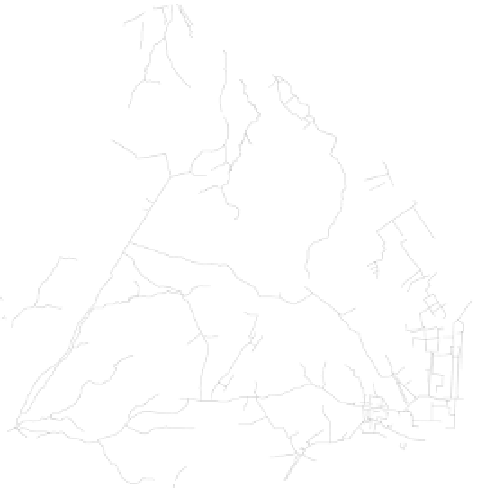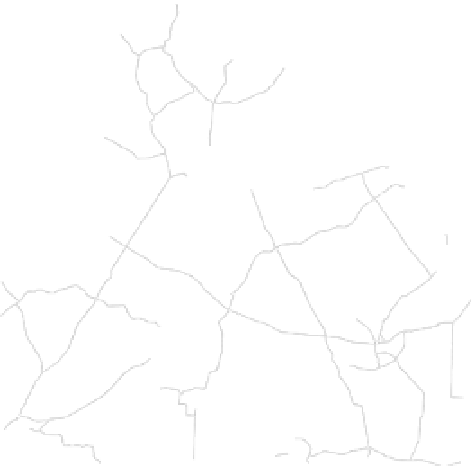Environmental Engineering Reference
In-Depth Information
(a)
Calluna vulgaris
Arnica montana
(b)
Fig. 8.1
Number of grid cells (1 km
2
) with the presence of
Calluna vulgaris
(a) and
Arnica montana
(b) in 1990 in
Drenthe, The Netherlands. After Werkgroep Florakartering Drenthe (1999). Reproduced by permission of the author.
montana
, characteristic of the same plant community,
produces seeds with short longevity (Thompson
et al
.
1997), which prevents re-establishment. Indeed, the
pattern of
A. montana
features a strong decline in the
number of grid cells (Fig. 8.1b). At the national level
it decreased from 1000-3000 grid cells in 1930 to
31-100 grid cells in 1995 (Tamis & van 't Zelfde 2003).
A second reason why biodiversity does not always
reflect significant land-use changes is that charac-
teristic ecosystems are sometimes very species-poor
whereas their degradation phases are much more
species-rich. Typical examples are bogs and the
afore-mentioned heathlands. Bog drainage leads to a
decrease in characteristic species (Moore 2002) but at
the same time to an increase in species richness
(Vepsäläinen
et al.
2000). The third reason has to do
with changes in landscape structure. Whereas most
characteristic ecosystems used to cover comparatively
large and uniform areas this is no longer the case today.
The landscape has become increasingly fragmented and
the large bogs, heathlands, forests, etc. of the past
have developed into a mosaic of small woodlands,
meadows, arable fields, hedgerows, ponds and so on.
If such landscapes developed from species-poor land-
scapes such as large bogs, biodiversity can actually
have increased.
8.3 Constraints for restoration
8.3.1 Seed longevity
Plant species richness may not change during the first
years of bush encroachment (abandonment) or of
establishing the dominance of grasses (eutrophication)
or invasive species. As a result of decreasing light avail-
ability at soil level, fewer species will flower and set
seed. This implies a depletion of the soil seed bank,
especially of species with a transient or short-term
persistent seed bank (Thompson
et al
. 1997). After
bush encroachment of several decades on the alvar
of Öland, Sweden, both the species richness of the soil
seed bank and the established vegetation have
decreased (Bakker
et al
. 1996a). Spectra of plant
communities in dry grassland and heathland in
north-west Europe show that these communities can






































































































































































































































































































































































































































































































































































































































































































































































































































































































































































































































































































































































































































































































































































































































































































































































































































































































































































































































































































































































































































































































































































































































































































































































































































































































